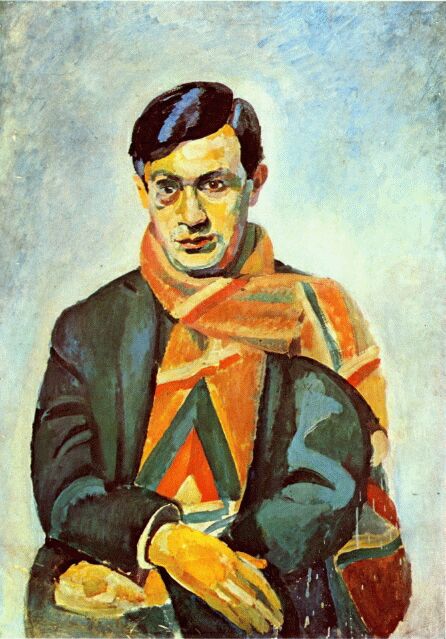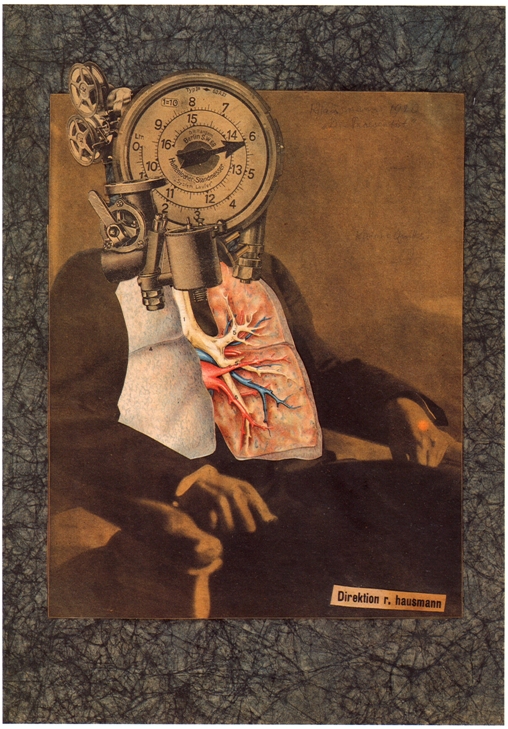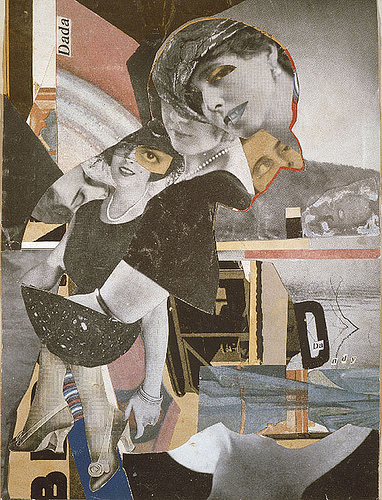Dada is a anti-art movement. Strong, Negative, and destructive element that artists were concerned, Shocked, protested against and saw it as nonsense. They rebelled against the horrors of WW1 and the decadence of European society. The shallowness of blind faith in technological progress, and the inadequacy of religion and conventional moral codes in a continent in upheaval. Rejecting all tradition, they fought for artistic freedom. The Dada developed literary movement after the poet Hugo Ball opened the cabaret Voltaire in Switzerland and gathering place for independent young poets, painters, and musicians. Dada's inspiration was a young Romanian poet called Tristan Tzara who edited the periodical Dada beginning in July 1917. Poet Tzara joined Hugo Ball, Jean Arp (Hons Arp) and Richard Heulsenbeck, exploring Sound poetry, Nonsense poetry, and Chance poetry. Tzara's steady outputting of Dada manifestos solidified the anti-art movement, creating an exact definition of chaos. The Dada created a new prospective of what art is. Chance placement, artistic anarachy, and absured titles was the characteristics of the Dada's style.
Hugo Ball
he was born into a strict family. He was a sensitive child, He was apprenticed as a young man to a leather factory. It was Hugo Ball who provided the Dada movement in Zurich with the philosophical roots of it revolt. 1910-1913 He embarked on a career in the theatre. His ambition was to develop a theatre modelled on the idea of Gessamtkunstwerk, which is a synthasis of all arts that could motivate the social transformation and rejuvenation. He started writing reviews on poems, articles and plays to the journals Die Neue Kunst which was known as the new art. He also wrote for Die Aktion. both pf these journals were within style and content that anticipated the later format of Dada journals. Poems written together by Hugo Ball and Hans Leybold appeared under the pseudonym Ha Ha Bailey. Young and rebellious expressionist writer Hans was was really close friends with Hugo Ball. Hans was also a great influence on Hugo Ball's intellectual development. He also helped the formation of Ball;s ideas in the Dada period especially. Abstract painter and the expressionist Blau Reitar group leader and Richard Heulsenbeck, a young doctor and student who would later become central to Dada in Zurich and Berlin, both of whom he met for the first time in Munich. in 1914 Hugo Ball tried to sign up for the army three times and was refused the job each time due to medical issues. The trauma he experienced when het took a private trip to the font in Belgium prompted him to abandon the theatre and move to Berlin where he began to absorb into political philosophy Peter Kropotkin an Mikhail Bakunin especially. He started writing a book on Bakunin that would continue to occupy him for the rest of his life. With Heuslsenbeck, Hugo Ball staged several anti war protests in Berlin. The first took place in February 1915 and was a memorial to all fallen poets. Hans Leybold included who was mortally wounded in the war.
Tristan Tzara,
Sound Poetry
Sound poetry is an artistic form bridging literary and musical composition in which the phonetic aspects of human speech are foregrounded instead of more conventional semantic a syntactic values "verse without words". By defining sound poetry is intended for performance.
It is sometimes argued that sound poetry is found in oral poetry tradition, the writing of pure sound texts that downplay the roles of meaning and structure is a 20th century phenomenon. The futurist in Dadaist vanguards of being of this century were the pioneers in creating the first sound poetry forms.
Sound poetry evolved into visual and concrete poetry, two forms based in visual art issues although the sound images are always very compelling in them. Later on with the development of the magnetic tape recorder. Sound poetry evolved thanks to the upcoming of the concrete music movement at the end of the 1940s some sound poets were used by later poetry movement in the 80s and by other art and music movements that brought up new forms such as text sound art that may be used for sound poems which more closely resemble fiction or even essays.
Marcel Duchump
The voice of Dada
He was a French painter who joined the Dada movement and became its most prominent visual artist. He had analysed his subjects as geometric planes under the influence of cubism. His painting Nude descending a staircase pushed the limits of the static images, ability to record and express motion. To Duchump art and life were processes of random chance and wilful choice and he therefore became the movements most outspoken orator.

Dada as an art form
From the chaos comes a cohesive style
Matters of individual decision and selection became the new artistic act. This found freedom influenced Duchump to make ready made sculpture. such as a bicycle wheel mounted on a wooden stool and present found objects (assemblages) such as the urinals shown in his exhibitions. From the inspiration of Dada this now opened the public's eyes and views of what art can expand out to and how. some got the joke whilst others were outraged, they didn't consider his work acceptable as art, they took his work as an insult because it questioned their "solid" definition of what they see as art. Another example was when Duchump painted a moustache on a reproduction of Mona Lisa. It was to represent an assault on tradition - again redefining "art", the public saw this as an attack upon Mona Lisa.
The ways of Dada quickly spread. Despite being accused of mocking and defaming a society that had become insane and not creating "art" several Dadaists produced meaningful, visual art that has contributed to graphic design. Dada artists Raoul Haussmann, Hannah Hoch claim to have invented the art of "photo montage". A technique of manipulating found photographic images to create Jarring Juxtapositions and chances associations.

Raoul Haussmann
Hannah Hoch
Kurt Schwitters and the Merz
He created a non-political offshoot of Dada that he named Merz. Beginning as a one-man art movement in 1919. His Merz pictures were collage compositions using printed ephemera, rubbish and found materials to compose colour against colour, form against form and texture against texture. His complex designs combined Dada's elements of nonsense and chance with strong design properties. when he tried to join the Dada movement he was refused membership due to the fact for being too bourgeois
Printed ephemera
He wrote and designed poetry that played sense against nonsense. In the early 1920s constructivism became an added influence in Kurt Schwitters work after he made contact with El Lissitzky and Theo Van Doesburg who invited Schwitters to Holland to Promote Dada. Schwitters and Van Doesburg collaborated on a book design with typographic forms as the characters.
From 1923 until 1932, Kurt Schwitters published 24 issues of the periodical Merz, whose 11th issue was developed to advertising typography, during this time Schwitters ran a successful graphic design studio with Pelikan- manufacturer of office equipment and supplies, as a major client, and the city of Hanover employed him as typography consultant for several years. when the German political situation deteriorated in the 1930s, Schwitters spent a lot of time in Norway and moved to Oslo in 1937. After Germany invaded Norway in 1940, he fled to the British isles, where he spent the rest of his years.
The Berlin Dadaists
Taking the axe to the axis
In contrast to Kurt Schwitters, the Berlin Dadaists John Heartfield (Helmut Herzfelde), Wieland Herzfelde, George Grosz, held vigorous revolutionary political beliefs and oriented many of their artistic activities towards visual communications to raise public consciousness and promote social change. A German WW1 veteran and founding member of the Berlin Dada group in 1919, Heartfield used the harsh disjunction of photo montage as a potent propaganda weapon and innovated in the preparation of mechanical art offset printing. The Weimar republic and the growing Nazi party were his targets in posters, books, magazines, political illustrations and cartoons.
Heartfield worked directly with glossy prints acquired from magazines and newspapers. He commissioned a needed image from a photographer only occasionally because photography was still considered a poor man's art form. Heartfield's images met with literal and comprehensive working art.
After the stubtruppen occupied his apartment studio in 1933, he fled to Prague where he continued his graphic propaganda and mailed postcard versions of his graphics to Nazi leaders, learning that he was on a Nazi watch list in 1938, he fled to London where he stayed until setting in Leipzig, east Germany in 1950. there he worked mainly as a designer for theatre sets and posters.
Before his death in 1968 he produced photo montages protesting the Vietnam war and calling for world peace, unfortunately Still Timely is the title given to retrospective of his graphic art.
Heartfield's younger brother Wieland was a poet critic and publisher who edited the journal Neue Jugend. which was designed by Heartfield. After being jailed in 1914 for disturbing communist literature, Wieland started the Malik Verdag publishing house an important avent grade publisher of Dada. left wing political propaganda and advanced literature.
The painter and graphic designer George Grosz was closely associated with the Herzfelde brothers. His biting pen attacked a corrupt society with satire and caricature. He advocated a classless society and his drawings project an angry intensity of deep political convictions in what he perceived to be a decadent, degenerate Milieu.
The end of Dada
The flame that burns the brightest
Having inherited assault upon all artistic and social traditions. Dada was a major liberating movement that continues to inspire innovation and rebellion. Dada was born in protest against war and its destructive exhibitionist activities became more absurd and extreme after the great war ended.
In 1921 and 1922 controversy and disagreement broke out among its members and the movement split into factions. French writer Andre Breton who was associating with the Dadaists, emerged as a new leader who believed that Dada lost its relevance and that new directions were necessary. Having pushed its negative activities to the limit lacking a unified leadership and with its members facing the new ideas that eventually led to surrealism, Dada floundered and ceased to exist as a cohesive movement by the end of 1922.
Dada's rejection of art and tradition enabled it to enrich the visual vocabulary started by futurism. though a synthesis of spontaneous chance actions with planned decisions Dadaists further rid typographic design of its traditional precepts by continuing cubism<s concept of letters as visual shapes rather than simple phonetic symbols.


















No comments:
Post a Comment